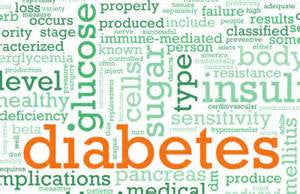
Why recommend diabetics wear medical id jewelry?
Share
According to wikipedia introduction:As of 2015, an estimated 415 million people had diabetes worldwide, with type 2 DM making up about 90% of the cases.This represents 8.3% of the adult population,with equal rates in both women and men. As of 2014, trends suggested the rate would continue to rise. Diabetes at least doubles a person's risk of early death.[3] From 2012 to 2015, approximately 1.5 to 5.0 million deaths each year resulted from diabetes.[The global economic cost of diabetes in 2014 was estimated to be US$612 billion.In the United States, diabetes cost $245 billion in 2012.
As we all know,Diabetes is a group of metabolic diseases in which there are high blood sugar levels over a prolonged period.Symptoms of high blood sugar include frequent urination, increased thirst, and increased hunger. If left untreated, diabetes can cause many complications.Acute complications can include diabetic ketoacidosis, nonketotic hyperosmolar coma, or death.Serious long-term complications include heart disease, stroke, chronic kidney failure, foot ulcers, and damage to the eyes.
Medical id jewelry how to help you?
We can engrave your vital medical information onto a medical ID tag
Your diabetes bracelet will contain important medical history and information that will help first responders, EMTs and paramedics treat you quickly. Once informed of your condition and medical needs, first responders are able to efficiently and effectively offer you the best possible care.
If you have been diagnosed with diabetes, it is important that you wear a diabetes medical alert bracelet.
What information should I engrave?
When deciding what to have engraved on your medical ID tag, there are a few vital details that must not be overlooked. Here are 5 things you should have engraved on your medical ID tag if you have diabetes.
1. First responders should know your first and last name. You may become separated from your purse or wallet and having your name clearly engraved on your medical ID tag will help in an emergency situation. If you are taken to the ER, the staff there will need to know your first and last name in order to gain access to your medical records.
2. Your medical condition should be listed on your medical ID tag. If you have diabetes your medical ID tag needs to be engraved in such a way that first responders will have a clear idea of your medical condition. Your tag may be engraved with something similar to the following:
DIABETES
OR
DIABETES TYPE I
OR
DIABETES TYPE II
3. Are you insulin dependent or on an insulin pump? If you are insulin dependent or have an insulin pump, then you should list the following information on your medical ID tag. You may engrave something like:
DIABETES
INSULIN PUMP
OR
DIABETES/INS. DEP
OR
DIABETES
INSULIN DEPENDENT
4. If you are on any other medications or have severe food or drug allergies, you will want that listed on your medical ID tag as well. Your tag may be engraved with something similar to the following:
DIABETES
ON COUMADIN
OR
DIABETES
PENICILLIN ALGY
5. You should always list your emergency contact information. It's best to ask yourself, "Who do I want called FIRST if something were to happen to me?"
"As a nurse in an emergency department myself, when you have people who come in and are unable to communicate their health history to us, it is so important to have an in case of emergency contact readily at our fingertips because it can help to change the course of how we treat the person and hopefully help to save a life!" Angela Agasse, RN

